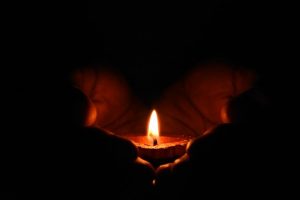Ayurvedic Rituals for the Winter Solstice
Ayurvedic Rituals for the Winter Solstice. On the winter solstice, we experience the shortest day and longest night of the year. To be exact, at 5:02am EST on Monday, December 21, 2020, the Earth’s North Pole will be the farthest away from the sun, and this marks the exact time of the winter solstice in the northern hemisphere. Although you may be fast asleep during the precise moment of the solstice, you can still celebrate this sacred moment in time. Throughout history, people from around the globe have celebrated this special day. Pagan societies like the Norsemen, Druids and ancient Romans and also civilizations like the Incas of Peru and Hopi Indians in North America all had unique ways that they celebrated the solstice. For instance, the Celtic Druids were the first to burn the Yule log as a symbol of welcoming the return of light while the Hopi Indians celebrated with purification practices, dancing and gift giving. In the Vedic tradition, there are a multitude of practices that make perfect winter solstice rituals. We want to share with you what the sister science to yoga, Ayurveda, recommends for honoring the winter solstice and welcoming the cold, inward days of winter.
Trataka Meditation

Image courtesy of Dhivakaran S from Pexels
Trataka, also called candle gazing, is a meditation technique where one keeps their eyes focused on one single flame in front of them. Candle gazing helps to maintain focus, purifies the eyes and also is a perfect way to celebrate the return of light which slowly returns, day by day, after the winter solstice.
How to Do Trataka Meditation:
On the evening of the solstice, light a candle and place it in front of your meditation cushion about 2 feet in front of you at eye level. If any lights are on in the room, turn them off so the room is dark, with the only light emanating from the trataka flame. Take a seat on your meditation cushion and, with your eyes closed, take 5 abdominal breaths, drawing the inhale in through the nose and out through the nose, allowing the belly to expand with each inhale and contract gently with each exhale. Once your breath becomes even calm and smooth, slowly open your eyes and bring your gaze to the candle’s flame. Try to not blink as you candle gaze. When your eyes begin to water, close your eyes and bring your awareness to your mind’s eye or ajna chakra. Internally, give thanks for the cycles of nature, the stillness of the solstice and the return of the sun in the days ahead. Close your meditation with 5 more rounds of abdominal breathing.
Practice Abhyanga
Photo courtesy of PAAVANI Ayurveda
Abhyanga is the Ayurvedic practice of massaging oil into the skin. This practice not only moisturizes and increases suppleness, it can also nourish the nervous system, reduce anxiety, overwhelm and fear, calm heated emotions, detoxify the lymphatic system and also promote self-care and self-love. We absolutely love PAAVANI Ayurveda’s selection of body oils to perform abhyanga!
How to Abhyanga:
- Select an organic, plant based body oil and allow it to warm on low in a mini crockpot. To test the temperature of the oil, place a small amount of oil in your hand or wrist. The temperature should be around body temperature.
- Lovingly massage the oil into your skin, with a medium pressure, using long strokes on the limbs and circular strokes on the joints.
- Work in a clockwise position while massaging the breasts and abdomen.
- Remember to also massage the feet and the crown of the head.
- Allow the oil to penetrate deep into the skin’s layers by keeping the oil on for at least 20 minutes.
- After the abhyanga is complete, you can rinse off in the shower or move onto our next winter solstice ritual, an Ayurvedic Milk Bath!
Pamper Yourself with an Ayurvedic Milk Bath
Photo courtesy of PAAVANI Ayurveda
Calm the senses, ground the body and mind and envelop your skin in a luxurious herbal milk bath! Here’s what you’ll need:
Ayurvedic Milk Bath:
Ingredients:
- 2 cups milk (cow’s, oat, almond or coconut)
- ½ cup dried or fresh rose petals
- ¼ cup himalayan or celtic salt
- ¼ cup epsom salt
- 3 drops lavender essential oil
- 1 drop vetiver essential oil
Directions:
Draw your bath and add all your ingredients to the bathwater. With mindful awareness, step into your Ayurvedic bathing ritual. Take soothing, calming and full breaths in & out, connecting with the stable and grounding qualities of the earth element and the compassionate and fluid energy of the water element.
We hope these Ayurvedic rituals spark your creativity and desire to connect with your true nature this winter solstice. This is a time of year when we embrace stillness, inwardness and self-reflection and through this, we gather energy, intention and the motivation we will need to reactivate and grow in the new year.
Wishing you a joyful and restorative winter solstice!
Interested in learning more about Ayurveda? Please visit our 100 Hour Online Ayurveda & Yoga Course.
Written by Trudy Collings
SPY Facilitator & co-owner of PAAVANI Ayurveda.



